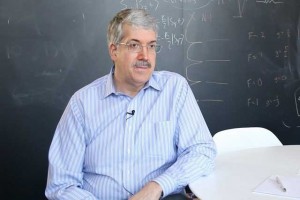Sudden evolution of galaxies due to gas removal
Galaxies shutdown star formation suddenly when their entire cold gas reservoir is displaced
What is the E-mode and the B-mode of polarization? How are neutrinos connected with cosmic microwave background lensing? Henry De Wolf Smyth, Professor of Physics at Princeton University Lyman Page, speaks on non-Gaussianity in temperature distribution of CMB.
There is a very special property of the microwave background that allows us to be able to tell that it has been gravitationally lensed by the mass. That property is called gaussianity. And what it means is that if we took the microwave background and we bin it up into little bins and we then plotted the temperature, the temperature distribution of all those little bins would follow a Gaussian curve. On the surface of last scattering the microwave background changes in temperature by a part in 100,000. So we chop up all those little bits, those little squares, and we just recorded their temperature. When we plot that distribution it follows the famous Gaussian bell curve.
What also happens is this lensing works on polarization. So the mass distribution between us and the surface of last scattering takes one kind of polarization, called an E-mode polarization and changes its symmetry and adds to it another type of polarization called the B-mode. So first, what is E-mode polarization? Imagine that you had a pattern of little directional arrows that told you the direction of polarization, and you took that pattern and held it up to a mirror and you look to see if it changed. If you had a pattern of pure radial spokes and you put it in a mirror, it wouldn’t change. If you had a pattern of polarization that went around in a circle, it wouldn’t change in the mirror. Those are called E-modes, that’s how they’re defined; by what they look like when they’re reflected in a mirror.
If instead you had B-mode, you will have a pattern that looks like a pinwheel, and when you look at that in a mirror, all those would flip. That’s called the B-mode and the notion of looking at it in a mirror is called parity transformation. The early universe, the polarization from the early universe as long as there are no gravitational waves, the polarization is a pure E-mode pattern. Now, that E-mode pattern comes to us, it traverses the universe and it’s lensed by all this mass between us and the surface of last scattering. That breaks the symmetry and adds to that E-mode pattern a little bit, just by deflecting all these little arrows, it adds to it a little bit that has this other parity, this B-mode type term.

Galaxies shutdown star formation suddenly when their entire cold gas reservoir is displaced

What do we know about them?

Physicist John Doyle on the Big Bang, time-reversal symmetry, and the electric dipole moment of the electron